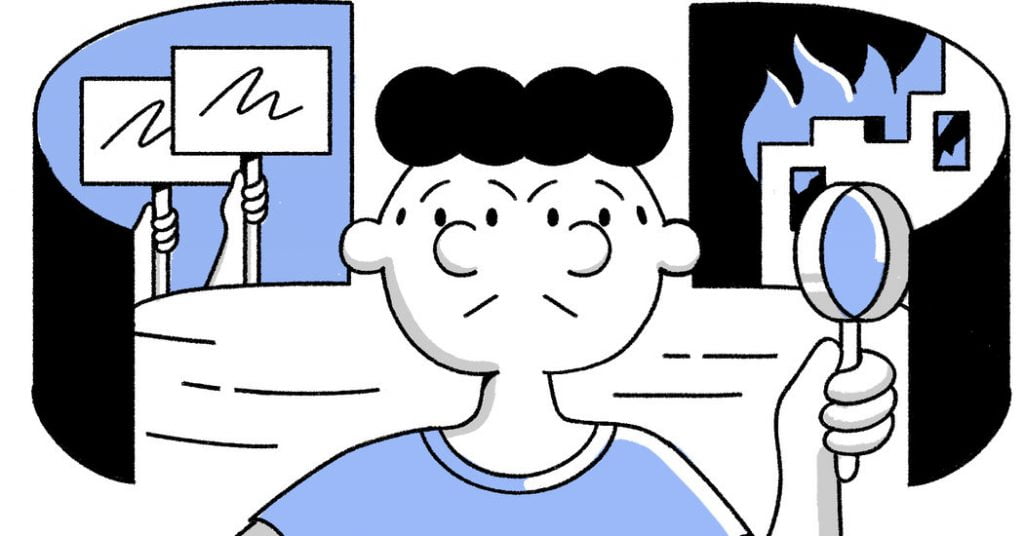With the combination of camera phones and social media, more people than ever are being made aware of incidents of police brutality and racial inequality, and of the protests they have touched off.But making sense of the deluge of posts in the present moment can be difficult.
Misleading posts and images can quickly go viral. For example, a widely shared photo on Twitter of a McDonald’s set ablaze was supposedly taken at the beginning of the Minneapolis protests after George Floyd’s death. But the picture was, in fact, of a restaurant that burned down in Pennsylvania four years ago.
And once an image has been shared countless times, its origin story becomes totally lost and the false narrative takes hold. So how can you judge an account’s accuracy and make sure it’s trustworthy?
To help judge the veracity of a text post or an image, go to the main page of the account in question, and read the bio and look at previous content. If an account seems to be posting at random, that should be an immediate red flag.
Focus on accounts that provide up-to-date and — even better — live content. Some accounts will “go live” during a protest, which can help you dodge the trap of viewing recently uploaded images that aren’t actually recent. Also take note of the account’s engagement with followers, which shows you how knowledgeable its creator is — and gives a sense of how essential he or she views the content to be.
Look for accounts that communicate new updates to followers, like changes on recent posts and breaking news. This often creates a beneficial feedback loop where the community keeps the account abreast of what’s happening, and then those updates will be relayed to followers.
One example of a reliable Instagram account is @JusticeForGeorgeNYC, which was created a few days after Mr. Floyd’s death. The page has quickly become known as a place to find accurate information about when and where marches and protests are happening in New York City.
As the account grew to have more than 180,000 followers, its creators realized that they had an immense responsibility to ensure that it only provided information that was helpful, empowering and authentic.
“We try to vet each event as carefully as possible,” a spokesperson for the group said in an email. “Like much of the movement, @JusticeForGeorgeNYC is a grass roots effort.” The creators have relationships with a range of organizations and individual activists who tell them of planned events; followers also send information about gatherings as they are planned. (You can also find @JusticeForGeorgeNYC on Twitter and Facebook.)
But systemic injustices, police brutality and racial inequities aren’t things that just started happening, of course. So when judging which accounts to follow, pay attention to those that have been doing the work before this moment. If you’re scrolling through an account and all you see is one or two posts about protests, you might want to rethink considering it as a dependable source.
Color of Change is an online group that started in 2005 whose strategy is to inform, contextualize, inspire and activate. In addition to its website, the group, which has 1.7 million members, is active on various social media platforms. One of its missions is to promote user-generated content on its YourVoice platform, a way for members to engage and elevate their voices around Color of Change’s campaigns. “Everything is vetted and discussed before it’s published,” a spokeswoman explained via email.
You can also follow noted educators and artists within a given movement. In this case, that could be Ibram X. Kendi, the author and the founding director of the Antiracist Research & Policy Center. As a historian, Dr. Kendi provides both in-depth information and explanation of complex issues that some readers may not fully understand or were never taught. (On Instagram, @ibramxk; on Twitter, @DrIbram.)
Or check out the photographer Laylah Amatullah Barrayn, who has been using her Instagram account, @laylahb, to capture moments from the protests in Minneapolis.
Black photographers like Ms. Barrayn act as the eyes of the movement, telling the story in ways that let followers comprehend the moments while highlighting communities and experiences that aren’t always shared.

